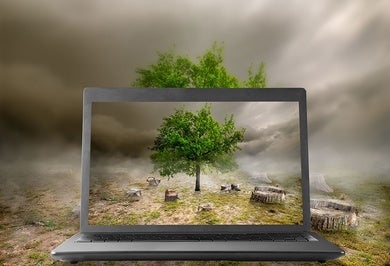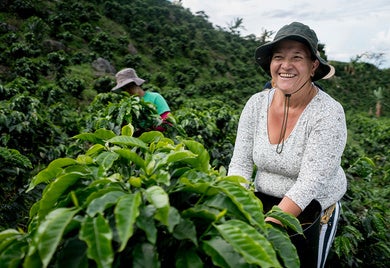
Cutting-edge Data for Agricultural Resilience: Introducing AGRIADAPT
How can agribusinesses proactively navigate the effects of climate change and become more resilient? By unlocking the potential of data. IDB Invest has created AGRIADAPT, a tool based on cutting-edge agricultural and climate data that provides customized climate vulnerability analysis and adaptation recommendations.

Here’s the New Ecological Alternative to Traditional Textile Fiber, Made in Latin America
Earth Day is a great time to remember that we can’t keep thinking about returns if we don’t consider our planet’s health. So-called "cellulose fiber" is an environmentally-friendly alternative to traditional textile fibers that can help a great deal in that regard.

How Fintech Can Help Nanks Tackle Deforestation
Big data and geospatial technology are making it easier for banks to decrease risk when financing projects with potential environmental impacts. How? Our guest author, Luiz Amaral, Global Manager of WRI’s Global Forest Watch Commodities has the answer.

Expo Milano 2015 – an unlikely place for sustainable business?
While critics call it a bloated global extravaganza for its escalating public expenditure, the 2015 Expo in Milan, Italy, also brings opportunities for sustainable business globally. This year’s topic of the World Fair - Feeding the Planet, Energy for Life – seeks to highlight solutions to one of the greatest development challenges the world faces today. There are still 805 million people suffering from hunger and malnourishment globally, while at the same time an incredible 2.1 billion people are obese or overweight, an increase of 28 percent in adults and 47 percent in children since 1980. In addition, about 1.3 billion tons of food is wasted every year, causing economic losses of about $750 billion.

Can the private sector feed the world?
To feed the world by 2050, global food production must increase 60 percent on as little as 12 percent more arable land. This will require avoiding environmentally-sensitive areas while planning for the unexpected events of climate change. Increased floods, droughts, storms, heat and evolving insect resistance are changing how the world farms. Food security and agriculture are part of an ongoing dialogue at this year’s World Economic Forum Annual Meeting in Davos, where experts are identifying ways to replicate what works and tackle what doesn’t.